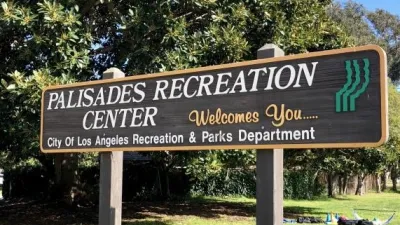A recent event organized by Good Magazine, Sheridan/Hawkes Collaborative and The Public Studio brought together about 30 civic-minded designers, planners and architects to come up with some ways to improve the urban environment of Los Angeles. It was a big question to tackle in one afternoon, with a huge array of possible solutions. The crowd was split up into five separate groups and surprisingly, each came up with a similar answer: taco trucks. OK, not taco trucks specifically, but the essence of taco trucks and what they bring to the city.
A recent event organized by Good Magazine, Sheridan/Hawkes Collaborative and The Public Studio brought together about 30 civic-minded designers, planners and architects to come up with some ways to improve the urban environment of Los Angeles. It was a big question to tackle in one afternoon, with a huge array of possible solutions. The crowd was split up into five separate groups and surprisingly, each came up with a similar answer: taco trucks. OK, not taco trucks specifically, but the essence of taco trucks and what they bring to the city.
They're informal, they're impermanent-yet-reliable, they're small local business, and they activate the street. Overall they represent a unique blend of private business and public space that puts dollars in the local economy and eyes on the streets.

A bunch of people trying to make L.A. better. (Photo by Eric Drachman)
That's how taco trucks came to be a central element of the ideas in each of the plans devised by these five groups of civic-minded people to improve the city of Los Angeles. The group into which I added my meager two cents used the idea of the taco truck as a launching pad for a broader vision of established 'flexible' zones that could harbor a variety of temporary uses, both public and private. As we quickly bounced ideas off of each other, one revelation stuck out to me and that was the absence of that unique blend of private and public in most development projects. Sure, there are public plazas in front of skyscrapers and outdoor seating at cafes, but not too many instances where the public-ness doesn't seem tacked on or the private-ness doesn't seem like an invasion. The lines between public and private are appropriately clear, but do their physical locations have to be as distinctly separated?
Think of a typical mixed use project, a building with a few retail shops on the street level and some apartments on the floor or two above. The proximity creates an implicit connection between resident and local (or at least nearby) merchants, forms an economic bond and activates the street to make a livelier, more vibrant neighborhood. So you have private homes and private businesses and you throw in some shoppers and you've got a mixed-use, mixed-activity space. Granted, that arrangement might not be right for everyone or every place, but the resulting benefits to streetlife are pretty clear, I think.
But what if there were space within that project for public meetings, or a rentable kiosk space in front of the building where fruit peddlers could stand, or an open space that holds vendors during the day and outdoor events at night? Mixed use, it sometimes seems, just isn't mixed enough. Maybe mixed use needs to get mixier. Should publicly available space be zoned into new projects? Maybe, but that prospect opens a lot of questions about what "public" really means. Should temporary spaces be able to house multiple types of uses depending on the time of day and season? It might work, with the right combination of entrepreneurship, market forces and administration. Maybe it's easier said than done, but I think it's worth considering. The mixed use projects we've seen in recent years are an improvement from the single-use zoning chokehold of the past, but simply limiting our developments to a mix of two or three uses might not be doing enough to create more active and attractive places in our cities.

Alabama: Trump Terminates Settlements for Black Communities Harmed By Raw Sewage
Trump deemed the landmark civil rights agreement “illegal DEI and environmental justice policy.”

Planetizen Federal Action Tracker
A weekly monitor of how Trump’s orders and actions are impacting planners and planning in America.

The 120 Year Old Tiny Home Villages That Sheltered San Francisco’s Earthquake Refugees
More than a century ago, San Francisco mobilized to house thousands of residents displaced by the 1906 earthquake. Could their strategy offer a model for the present?

Rural Missouri Transit Service Could Lose State Funding
OATS Transit offers low-cost rides to primarily elderly rural residents with little or no access to other transportation options.

Opinion: California’s SB 79 Would Improve Housing Affordability and Transit Access
A proposed bill would legalize transit-oriented development statewide.

Record Temperatures Prompt Push for Environmental Justice Bills
Nevada legislators are proposing laws that would mandate heat mitigation measures to protect residents from the impacts of extreme heat.
Urban Design for Planners 1: Software Tools
This six-course series explores essential urban design concepts using open source software and equips planners with the tools they need to participate fully in the urban design process.
Planning for Universal Design
Learn the tools for implementing Universal Design in planning regulations.
Clanton & Associates, Inc.
Jessamine County Fiscal Court
Institute for Housing and Urban Development Studies (IHS)
City of Grandview
Harvard GSD Executive Education
Toledo-Lucas County Plan Commissions
Salt Lake City
NYU Wagner Graduate School of Public Service




























